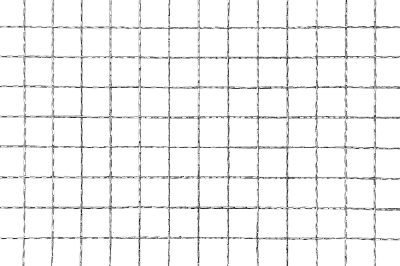What Is Crimp Wire Mesh?

Crimp Wire Mesh is a wire mesh made of corrugated wires woven at right angles to each other.
The word “crimp” refers to the twisting of the fibers. It is also found in wool, cotton, and other fabrics, and is used to add warmth and elasticity to a material. In the case of Crimp Wire Mesh, its role is to absorb load energy by deforming the wire when the wire mesh is subjected to large loads.
The wavy crimp shape of the wire used in Crimp Wire Mesh is formed by passing the wire through gears. In other words, the pitch of the gear is transferred to the wire. The wavy crimped wire is less likely to collapse. The wire materials used include galvanized wire, stainless steel wire, copper wire, vinyl-coated wire, and iron wire.
In addition, there are welded wire mesh, sintered wire mesh, and rolled wire mesh, which are reinforced by secondary processing of these wire meshes. The specifications for Crimp Wire Mesh are standardized as “JIS G 3553:2002 Crimp Wire Mesh.
Uses of Crimp Wire Mesh
Crimp Wire Mesh is mainly used as fall barriers in the construction and civil engineering fields. Crimp wire mesh is installed to prevent landslides and slope failures on artificial slopes in rivers.
An example of clamp wire mesh that we can see around us is a grill net for grilled meat. They are also used for sifting flooring materials and crushed stones in construction, and for threshing and sifting soil in agriculture and horticulture. General household products include partitions, fences, benches, food baskets, and oil drainers for deep frying.
Principle of Crimp Wire Mesh
The principle of clamp wire mesh’s energy absorption is due to the tension of the wire and the friction between the wires. In other words, the wire of the wire mesh absorbs energy at the intersections of the steel wires as they are extended.
Crimp Wire Mesh absorbs energy due to the tension of the wires, whereas rhombic or tortoise-shell wire mesh absorbs energy due to stretching. When compared in terms of energy absorbed, rhombic and Crimp Wire Mesh can absorb a greater amount of energy than rhombic wire mesh.
One test showed a difference of about twice the energy absorbed. On the other hand, when compared in terms of maximum load, rhombic and tortoise shell wire mesh can take greater loads than Crimp Wire Mesh.
Other Information on Crimp Wire Mesh
1. Wire Mesh Other Than Crimp Wire Mesh
In addition to Crimp Wire Mesh, there are other types of wire mesh for energy absorption.
Diamond shaped wire mesh (JIS G 3552)
Diamond wire mesh is a wire mesh consisting of two steel wires zigzagging around each other to form a diamond-shaped mesh. It is widely used for general fences, ball nets, and fall prevention fences.
Tortoiseshell wire mesh (JIS G 3554)
Generally, steel wire mesh is woven into a hexagonal mesh by twisting steel wires together three times. The twisting of the steel wires together prevents the mesh from moving and coming off.
It is mainly used as a protective material for construction, livestock barns, bird nets, and ball netting for golf driving ranges.
2. Differences Between Crimp Wire Mesh and Other Wire Mesh
As mentioned above, the major difference between Crimp Wire Mesh and diamond-shaped or tortoise shell wire mesh is the way it absorbs energy. Another difference is the size of the mesh.
Crimp Wire Mesh uses a crimped (wavy) portion of the wire to hold the intersections, allowing for relatively large mesh fences even with small wire diameters. However, if the mesh size exceeds 20 times the wire diameter, the mesh itself loses stability.
Crimp Wire Mesh, however, can only be made from mesh that is at least four times the wire diameter. If a mesh finer than four times the wire diameter is required, plain weave wire mesh is used. The names used to describe the size and performance of Crimp Wire Mesh are as follows.
- Mesh (N): number of mesh strokes per inch (25.4 mm)
- Wire diameter (d)
- Openings (w): distance between lines
- Pitch (p): distance between centers of lines, where pitch = line diameter + openings
- Percentage of space (w): Percentage of mesh space relative to the total area of Ao wire